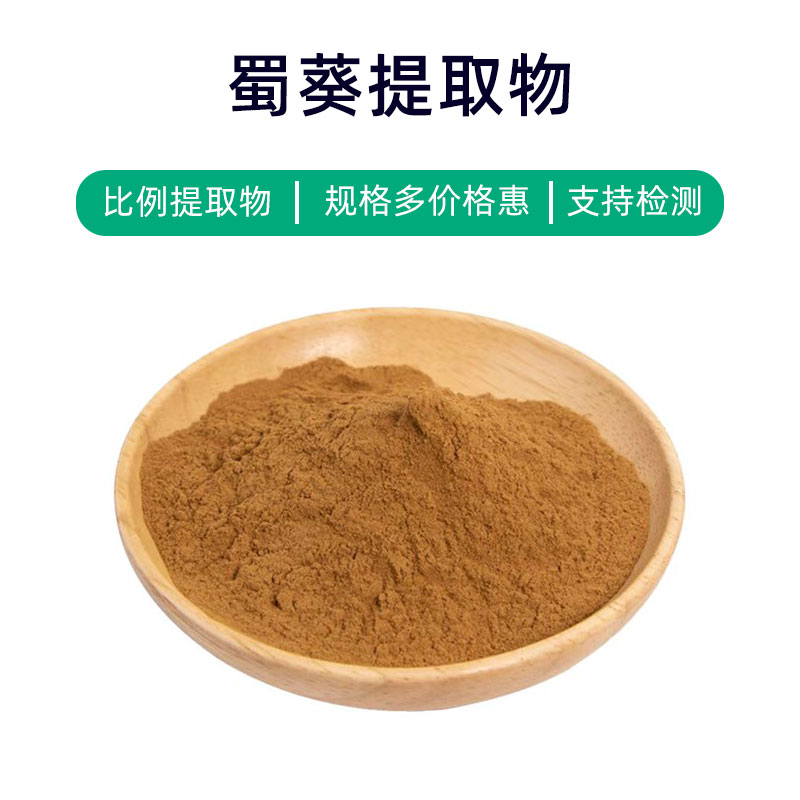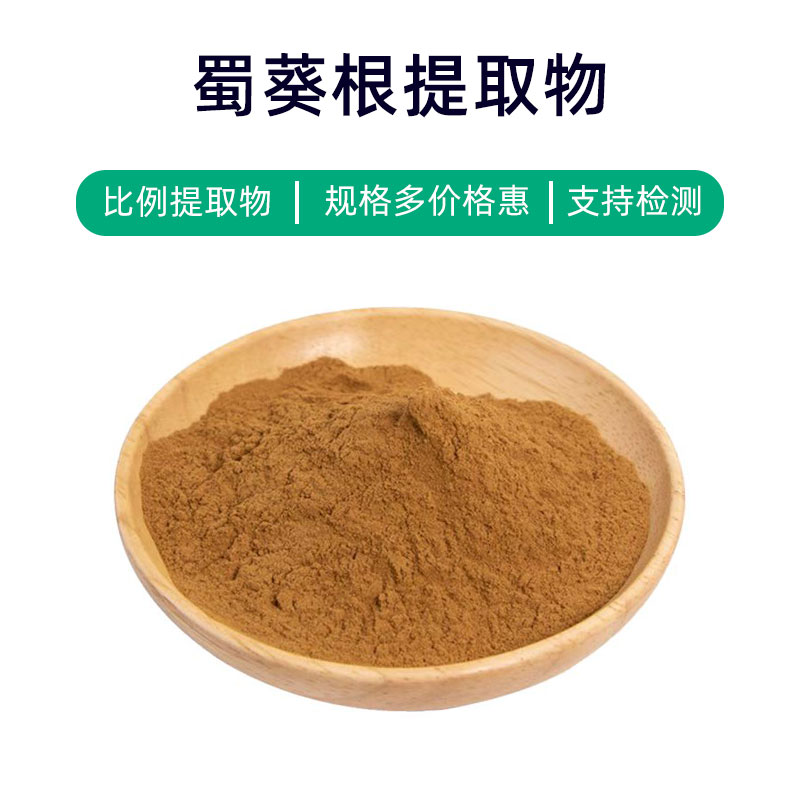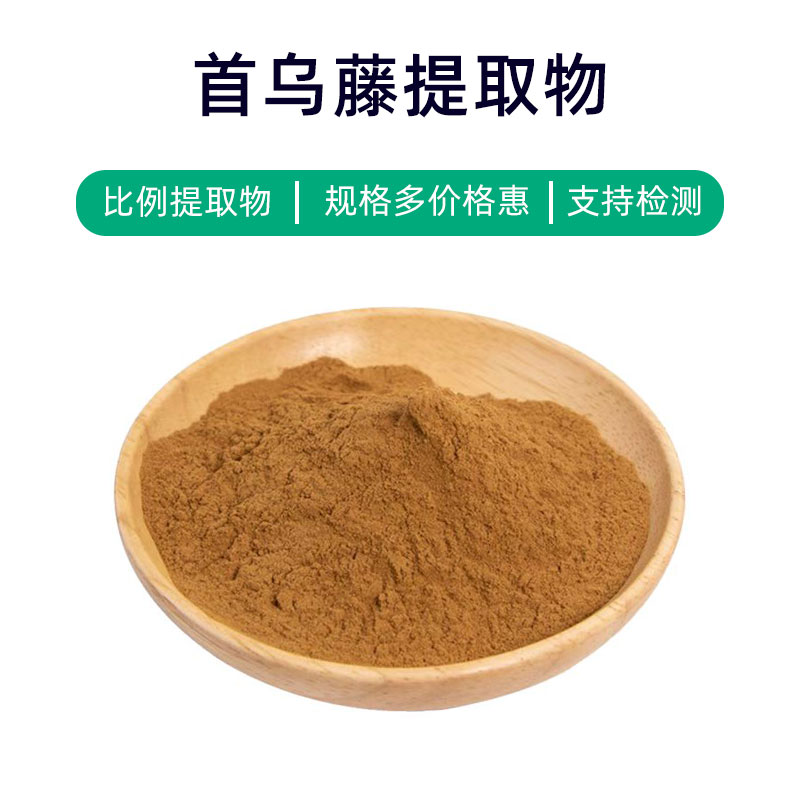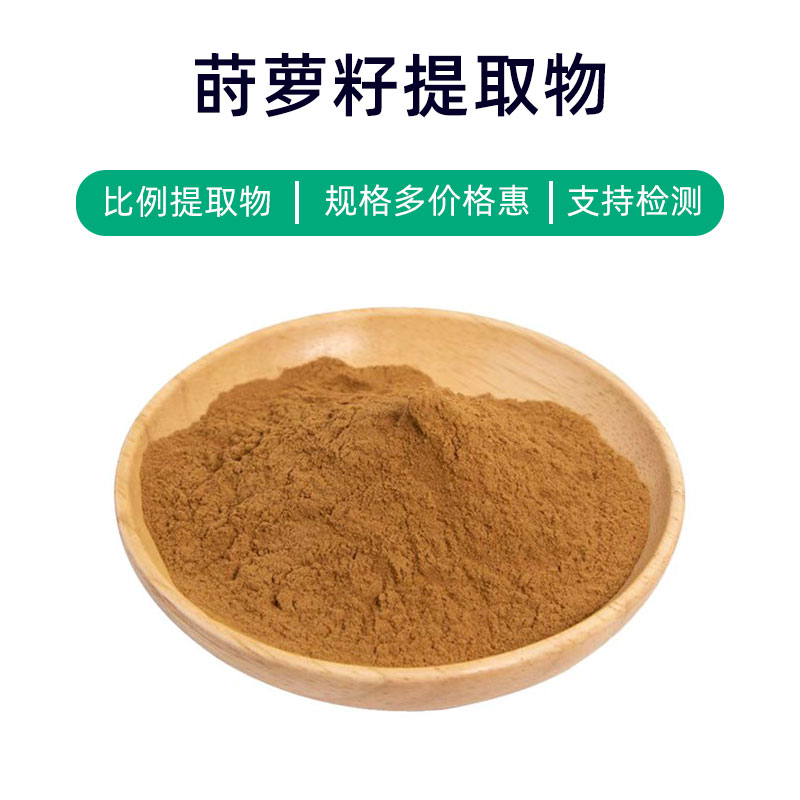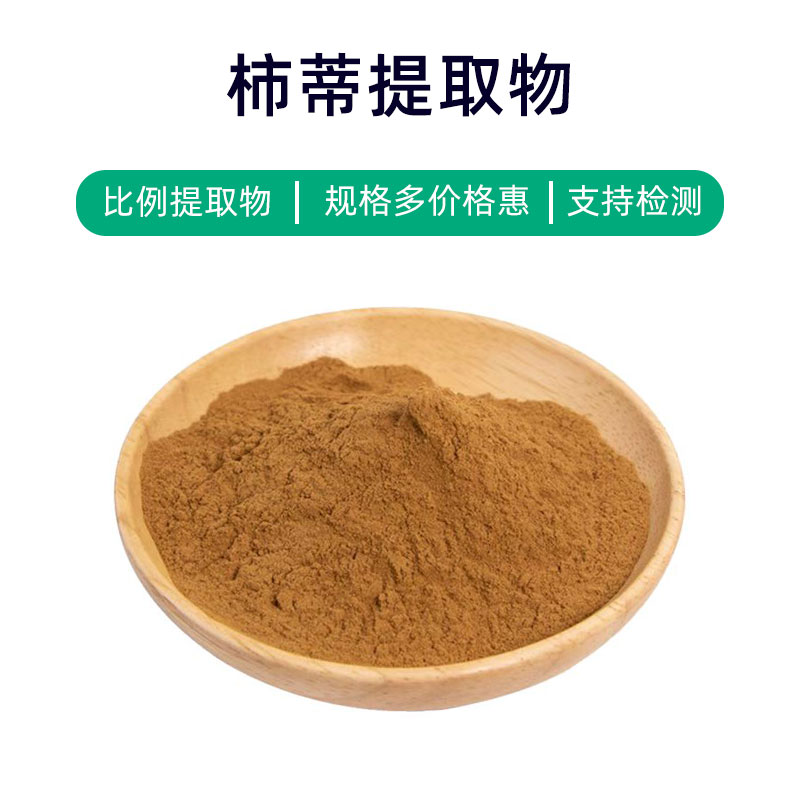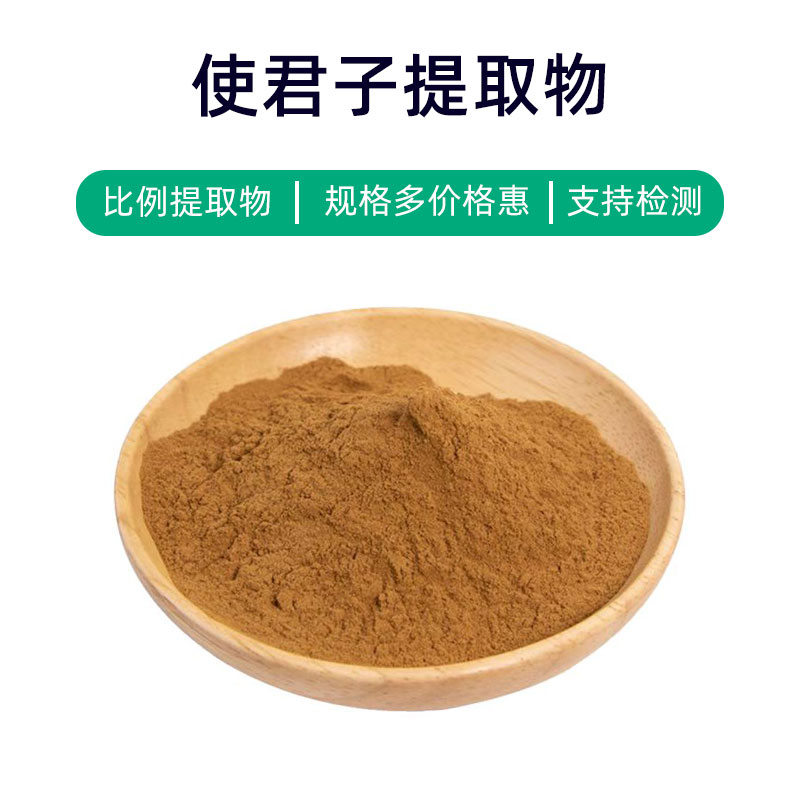Product Overview of Red Clover Extract
Red Clover Extract is a natural plant extract derived from the Red Clover (Trifolium pratense) plant, primarily comprising isoflavones, proteins, amino acids, and vitamins. Isoflavones are its main active components, including red clover isoflavones and glycyrrhizic acid.
This extract exhibits various benefits, such as antioxidant, anti-inflammatory, skin-brightening, and anti-aging effects. Due to its rich content of isoflavones, it helps neutralize free radicals and reduce oxidative damage, promoting skin health and slowing aging. Additionally, Red Clover Extract has certain anti-inflammatory properties that can alleviate skin inflammation, reducing redness and discomfort.
In the pharmaceutical field, Red Clover Extract is commonly found in skincare products and dietary supplements. In skincare formulations, it is used in brightening products, anti-aging creams, and anti-inflammatory treatments, serving as an ingredient in creams, lotions, and serums to improve skin texture, enhance radiance, and diminish fine lines. In dietary supplements, Red Clover Extract is often added as a natural antioxidant to boost immunity and overall health.
In cosmetics, Red Clover Extract is also widely applied. It is included in shampoos, conditioners, face masks, and cleansers, providing cleansing, moisturizing, and antioxidant effects that enhance the health and shine of hair and skin.
Overall, as a natural plant extract, Red Clover Extract offers multiple benefits and finds extensive applications across the pharmaceutical, dietary supplement, and cosmetics industries, providing effective support for health and beauty.
Production Process of Red Clover Extract
The production process typically involves the following steps:
- Raw Material Collection: Fresh Red Clover plants are collected, typically during their growth period, focusing on parts like flowers, leaves, or roots.
- Cleaning and Pre-Treatment: Collected Red Clover plants are washed and pre-treated to remove impurities, microorganisms, and pesticide residues. The cleaned plant material then undergoes initial processing, such as chopping, grinding, or drying, to prepare for extraction.
- Extraction Process: The extraction phase is crucial in production. Common methods include water extraction, ethanol extraction, and supercritical fluid extraction. Different methods impact the final product's composition and quality.
- Filtration and Concentration: The resulting extract is filtered and concentrated to remove plant impurities and solvents while achieving the desired concentration of the extract.
- Degradation and Purification: Sometimes, to enhance the active components, degradation or purification is performed using techniques such as enzyme hydrolysis, membrane separation, or chromatography to isolate and purify target components.
- Drying and Grinding: Finally, the obtained Red Clover Extract is dried and ground to achieve a dry powdered form. Common drying methods include spray drying, vacuum drying, or air drying, followed by grinding to the desired particle size.
- Packaging and Storage: The final Red Clover Extract product is packaged and stored in a dry, cool, and ventilated environment. Sealed packaging is typically used to prevent moisture and direct sunlight from affecting product quality and stability.
Each step of the production process requires strict controls to ensure product quality and safety.
Efficacy and Side Effects of Red Clover Extract
Red Clover Extract, derived from the Red Clover plant, has various effects and benefits, primarily including:
- Antioxidant Effects: Rich in antioxidants, including flavonoids and polyphenols, Red Clover Extract effectively neutralizes free radicals, slows oxidative reactions, and protects cells from oxidative damage, contributing to the aging process.
- Anti-Inflammatory Effects: Research indicates that Red Clover Extract exhibits significant anti-inflammatory properties by inhibiting the release of inflammatory mediators and alleviating inflammatory responses, showing potential for treating inflammatory diseases.
- Antibacterial Effects: The extract contains several antibacterial active components that can inhibit the growth and reproduction of bacteria, fungi, and viruses, providing antibacterial properties for preventing and treating related infectious diseases.
- Immune Modulation: Red Clover Extract can modulate immune function, enhancing the body's resistance and boosting immune cell activity, beneficial for improving immune system function and preventing infections and inflammation.
- Circulatory Benefits: It assists in improving blood circulation, enhancing microcirculation, increasing vascular elasticity, and reducing blood viscosity, positively impacting cardiovascular health.
- Anti-Tumor Effects: Some studies suggest that Red Clover Extract may have anti-tumor activity, inhibiting tumor cell proliferation and metastasis, showing potential for cancer prevention and adjunctive treatment.
- Blood Sugar Regulation: Certain studies indicate that Red Clover Extract can help regulate blood sugar levels and lower blood sugar concentrations, aiding in the prevention and treatment of diabetes and its complications.
While Red Clover Extract is generally considered safe, it’s important to be aware of individual differences and potential allergic reactions. Consulting a healthcare provider or pharmacist is recommended before use, and to follow the manufacturer’s suggested dosage, avoiding excessive or long-term high-dose usage to prevent adverse reactions.
Applications and Dosage of Red Clover Extract
As a natural plant extract, Red Clover Extract has widespread applications in pharmaceuticals, food, and cosmetics. Below are key applications in each sector along with recommended dosages:
Pharmaceutical Applications:
- Anti-Inflammatory Drugs: Its significant anti-inflammatory properties enable the creation of oral or topical anti-inflammatory medications, such as oral solutions, capsules, and ointments. The typical dosage for adults is 30-60 mg per dose, 2-3 times a day; topical applications should be applied to the affected area as needed, 2-3 times a day.
- Dietary Supplements: Red Clover Extract is commonly used in dietary supplements aimed at enhancing immunity, improving cardiovascular health, and offering antioxidant effects. The usual daily dosage for adults is 30-60 mg, adjustable based on individual needs.
- Antibacterial Drugs: Its antibacterial properties allow for the formulation of oral or topical antibacterial medications, including solutions, capsules, washes, and ointments. Dosages depend on specific conditions and formulations, and it's advised to follow a healthcare professional’s guidance.
Food Applications:
- Health Supplements: Red Clover Extract is often included in health supplements, like oral solutions and capsules, aimed at boosting immunity, improving digestive function, and increasing antioxidant capacity. It’s generally recommended to follow the product instructions or medical advice for usage; the daily dosage for adults depends on the product formulation.
- Functional Food Additives: It can serve as a functional food additive for flavor enhancement or added nutritional value. The amount added should meet food safety standards and relevant national regulations, with specific quantities determined based on food formulations.
Cosmetic Applications:
- Skincare Products: Frequently included in skincare products, Red Clover Extract provides antioxidant, soothing, and calming effects, suitable for anti-aging and sensitive skin products. Typically applied to clean skin, massaging until fully absorbed.
- Hair Care Products: Also used in shampoos and conditioners for cleaning the scalp, soothing itchiness, and controlling dandruff. The method involves applying an appropriate amount of shampoo or conditioner to the hair, massaging, and thoroughly rinsing.
In summary, while Red Clover Extract finds extensive application in pharmaceuticals, food, and cosmetics, users should fully understand the product information and use it under the guidance of healthcare professionals to ensure safety and effectiveness.
Introduction to the Source Plant of Red Clover Extract
The source plant for Red Clover Extract is Red Clover (scientific name: Trifolium pratense), also known as wild clover or meadow clover. This common herbaceous plant belongs to the legume family. Below are the plant characteristics, distribution, and growing environments of Red Clover.
Plant Characteristics:
- Appearance: Red Clover is a perennial herb, featuring creeping stems and thickened rhizomes. The stems creep along the ground, rooting as they grow, with leaves that are heart-shaped or kidney-shaped and often trifoliate.
- Flower Characteristics: The flowers are small and densely arranged, forming clustered inflorescences. They are white or light pink with five petals, often blooming in summer and fall.
- Fruit Characteristics: The fruit is a legume that splits open when mature, containing numerous seeds.
Distribution:
Red Clover is widely distributed in regions across Asia, Africa, and Oceania, primarily thriving in the humid grasslands, forest edges, riverbanks, and fields of tropical and subtropical climates. Specific locations include but are not limited to China, India, Sri Lanka, Thailand, Malaysia, and others.
Growing Environment:
- Climate Requirements: Preferring warm and humid climates, Red Clover adapts well to sunny environments but can also thrive in partly shady or fully shaded settings.
- Soil Requirements: It is not particularly picky about soil but grows best in fertile, well-drained, loose soils and shows good adaptability to varying pH levels.
- Moisture Requirements: Flourishing in moist environments, it prefers soil that is wet but well-drained, though it is also drought-resistant and adaptable.
- Altitude Range: Red Clover grows at various altitudes, found from lowland to mid-mountain areas, but is most commonly distributed at lower elevations.
Red Clover is a valuable medicinal plant with extensive uses in pharmaceuticals, food, and cosmetics. In suitable growing environments, it thrives, providing a rich source of medicinal resources.
Processing and Storage of Red Clover Extract
The processing of Red Clover Extract typically includes these steps:
- Harvesting Fresh Plants: Fresh Red Clover plants are collected and initially cleaned and processed.
- Grinding or Chopping: The plant material is ground or chopped to enhance extraction efficiency.
- Extraction: Suitable extraction methods, such as water or ethanol extraction, are employed to obtain medicinal components.
- Concentration, Filtration, and Drying: Finally, the extract undergoes concentration, filtration, and drying to yield pure Red Clover Extract.
For storage, Red Clover Extract should be kept in a dry, cool, and well-ventilated space, avoiding direct sunlight and high temperatures to prevent moisture damage. When stored properly, Red Clover Extract generally maintains the stability and activity of its medicinal components for a long time.
Monica Sun is a seasoned expert in the plant extraction industry with over a decade of experience in research and production. She specializes in the extraction and purification of plant active ingredients, focusing on driving innovation in natural product applications. Monica has participated in the development of multiple functional plant extracts, delivering high-value natural raw material solutions for the health food, pharmaceutical, and dietary supplement sectors.









